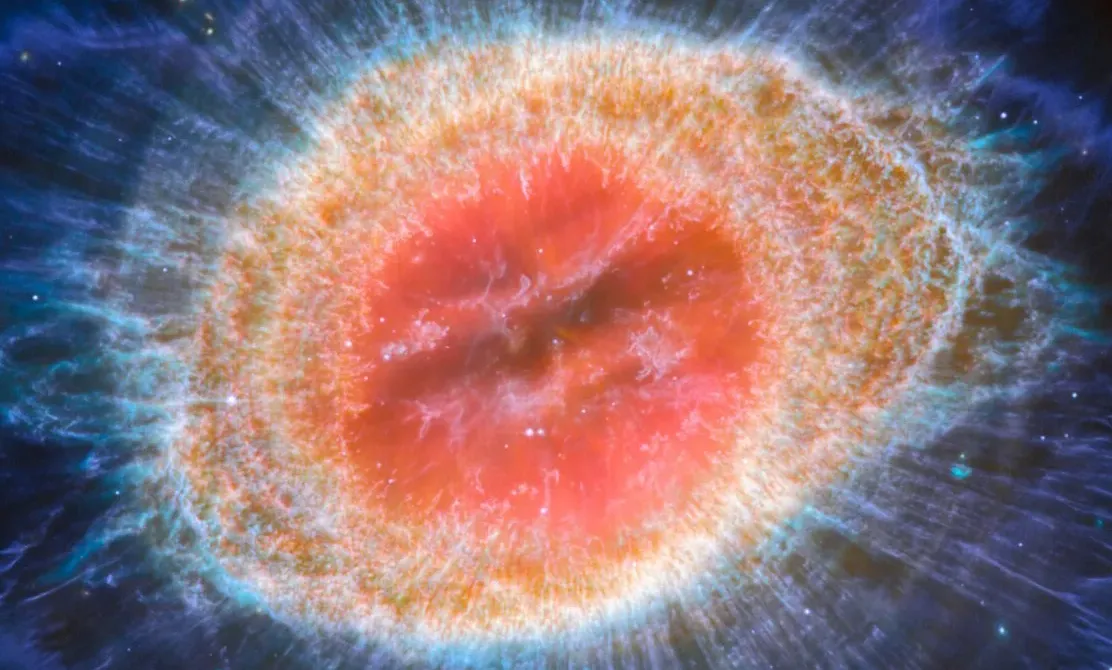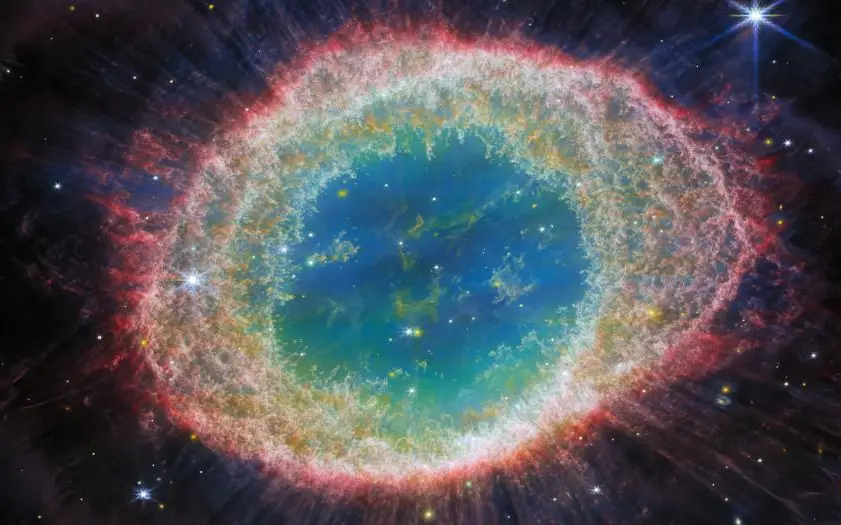Webb Telescope Captures Stunning Image of Ring Nebula
Today, the James Webb Space Telescope (JWST) released highly intricate images of the Ring Nebula, showcasing its remarkable level of detail. Commonly known as M57 and NGC 6720, this gaseous cloud consists of 20,000 compact globules that are abundant in molecular hydrogen. Situated approximately 2,500 light years distant from our planet, the Ring Nebula continues to captivate astronomers.
The first image (above) was taken with the NIRCam (Near InfraRed Camera), one of the primary sensors on the Webb Space Telescope. It is designed to detect light in the near-infrared spectrum and can record highly detailed images. NIRCam also took on the pillars of creating an updated image that is equally hypnotizing.
Meanwhile, another image (below) was taken using JWST’s Mid-InfraRed Instrument (MIRI). It better highlights the nebula’s (roughly) ten concentric arcs beyond its outer edge, likely formed by the interaction of its central star with its orbiting lower-mass companion. “In this way, nebulae like the Ring Nebula reveal a kind of astronomical archaeology, as astronomers study the nebula to learn about the star that created it,” the European Space Agency wrote in a press release.

French astronomers Charles Messier and Antoine Darquier de Pellepoix discovered the Ring Nebula somewhat by accident in 1779 while searching for comets. It is a planetary nebula, so named because early explorers mistook its appearance for distant worlds. The Ring Nebula was formed by a medium-sized star shedding its outer layers as it ran out of fuel and neared its death.
“The colorful main ring consists of gas ejected by a dying star at the center of the nebula,” ESA wrote. “This star is becoming a white dwarf – a very small, dense and hot body, which is the final stage of evolution for a Sun-like star.”




